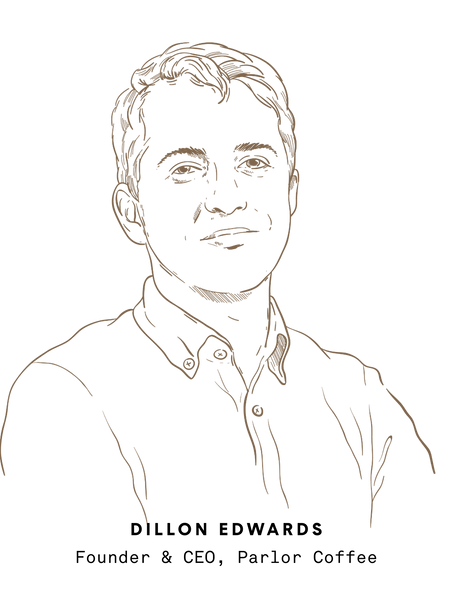On Finca Los Angeles

“When the two beans are squeezed from a fresh fruit and the slimy coating is removed, each bean remains loosely contained in a tough but thin shell known as the parchment.”
—Dr. F. L. Wellman
Welcome to Parchment

After years of traveling through coffee-producing regions, I’m convinced that the difference between a “good” and a “great” product can be traced back to a uniquely human element. Constant and diligent effort is required along the journey that this miracle crop makes before we can fulfill our role in the chain as roaster.
This publication you hold tells the story of one truly extraordinary family. Their persistence has been a touchstone inspiration in my growth as a coffee professional. Working with them renewed my belief that Parlor can make a positive impact through buying coffee.
Parchment is the physical manifestation of our attempt to loosely contain the world we’ve seen behind your cup of coffee. We are dedicating this first issue to telling the story of Colombian coffee producer Maria Bercelia. Our relationship with Maria, her family, and her farm, Finca Los Angeles, represents the ideal we strive for in building every new partnership at origin.
Thank you for diving in with us. Cheers, Dillon.
Finca Los Angeles sits on one of the highest mountain peaks in the hamlet of La Marimba. The farm is perched at the end of a long and winding one-lane dirt road that climbs through the heart of the most productive coffee-growing region in Colombia. Virtually every homestead is a coffee farm, with tens of thousands of trees planted on any available plot of land in parallel rows up and down the vertical mountainous terrain.
I have visited Maria Bercelia’s farm half a dozen times over the past few years. Every time I arrive, I’m immediately greeted by the scent of a meal that has been cooking for hours. It’s most often Maria’s signature pork, smoked over wood from coffee trees and pan-fried until crispy at its edges. This delicacy is served with plenty of rice, a side of patacones, and a bowl of classic sancocho. Maria’s overwhelming hospitality is matched only by the breathtaking view from her home: multilayered ridges of the eastern and central cordilleras of the Colombian Andes converge on the horizon and appear to roll on forever.

When I first made it to Maria’s farm in August 2016, it was equipped with the typical processing facilities found on Colombian smallholder coffee farms: washing and fermentation were done in a pair of simple tile tanks, and drying was managed on a covered deck. In June 2017, Maria’s husband, Jose, and their youngest son, Daniel, constructed new drying tables to expand their capacity and improve their ability to manage the drying process. The tables now sit directly beside their home and are a constant reminder of the family’s dedication to producing exceptional coffee.
Maria continually pushes herself to improve her coffee’s quality and expand her capacity every year. She serves as an example of achievement in her community. Her coffee reminds me of her family: each cup is comforting, welcoming, and brimming with character. It’s the kind of coffee I want to drink daily, and Maria is the kind of producer who inspires me as we work to present her coffee to the world.